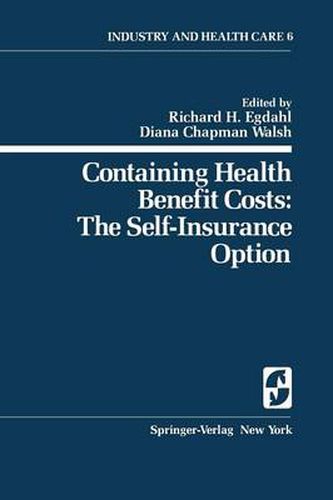Readings Newsletter
Become a Readings Member to make your shopping experience even easier.
Sign in or sign up for free!
You’re not far away from qualifying for FREE standard shipping within Australia
You’ve qualified for FREE standard shipping within Australia
The cart is loading…






This title is printed to order. This book may have been self-published. If so, we cannot guarantee the quality of the content. In the main most books will have gone through the editing process however some may not. We therefore suggest that you be aware of this before ordering this book. If in doubt check either the author or publisher’s details as we are unable to accept any returns unless they are faulty. Please contact us if you have any questions.
The springboard for this sixth volume in the Industry and Health Care series was a conference sponsored by the Center for Industry and Health Care of Boston University on June 9 and 10, 1978. That conference had a gradual genesis. Over a year ago we spent some time with Kevin Stokeld of Deere and Company and heard his views on self-insurance and self-administration as one device for a corporation to achieve better management control of its health benefit. More recent discussions with representatives of American Telephone and Telegraph Company and other corporations made it increasingly clear to us that management’s need for data to monitor the use of employee health benefits was emerging as a critical policy issue. Subsequent meetings with executives at John Hancock Mutual Life Insurance Company in Boston and Mobil Oil Corporation in New York, among others, convinced us that simple answers would be elusive or inadequate and that there was a need for an objective and careful look at the evolving relationships between employee health benefits, claims administration, health services utilization, and corpo rate health care cost containment programs. Since self-funding and particularly self-administration represent a fun damental change in the traditional insurance relationship, the conference was convened to explore the advantages and disadvantages of self-insurance for employee health benefits, with some attention to claims production but with special emphasis on the originating question of data for effective management of an employee health benefit.
$9.00 standard shipping within Australia
FREE standard shipping within Australia for orders over $100.00
Express & International shipping calculated at checkout
This title is printed to order. This book may have been self-published. If so, we cannot guarantee the quality of the content. In the main most books will have gone through the editing process however some may not. We therefore suggest that you be aware of this before ordering this book. If in doubt check either the author or publisher’s details as we are unable to accept any returns unless they are faulty. Please contact us if you have any questions.
The springboard for this sixth volume in the Industry and Health Care series was a conference sponsored by the Center for Industry and Health Care of Boston University on June 9 and 10, 1978. That conference had a gradual genesis. Over a year ago we spent some time with Kevin Stokeld of Deere and Company and heard his views on self-insurance and self-administration as one device for a corporation to achieve better management control of its health benefit. More recent discussions with representatives of American Telephone and Telegraph Company and other corporations made it increasingly clear to us that management’s need for data to monitor the use of employee health benefits was emerging as a critical policy issue. Subsequent meetings with executives at John Hancock Mutual Life Insurance Company in Boston and Mobil Oil Corporation in New York, among others, convinced us that simple answers would be elusive or inadequate and that there was a need for an objective and careful look at the evolving relationships between employee health benefits, claims administration, health services utilization, and corpo rate health care cost containment programs. Since self-funding and particularly self-administration represent a fun damental change in the traditional insurance relationship, the conference was convened to explore the advantages and disadvantages of self-insurance for employee health benefits, with some attention to claims production but with special emphasis on the originating question of data for effective management of an employee health benefit.